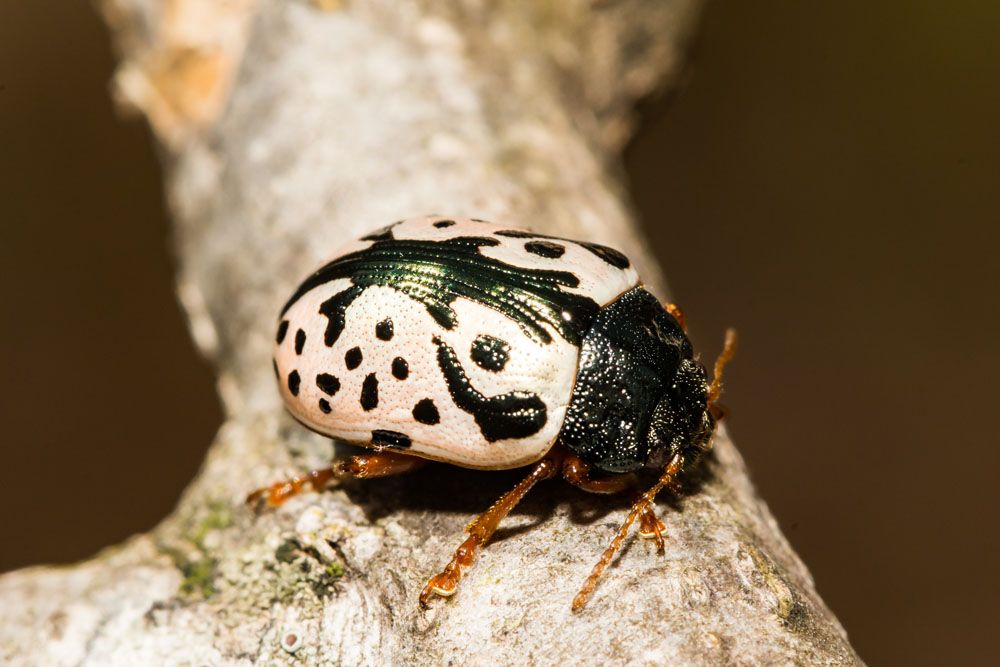
Elm Calligrapha – Caligrapha scalaris
Elm Calligrapha – Calligrapha scalaris
Common Name: Elm Calligrapha
Latin Name: Calligrapha scalaris
Appearance:
- Elm calligrapha is a medium-sized calligrapher beetle that was previously common but is now in decline. It has traditionally been a species specialist, eating nearly entirely on American elm. As Dutch elm disease decimates that species, the beetle migrates to other hosts, including slippery elm, willow, and potentially dogwood and paper birch.
- Adults range in size from (7.5 to 9.5 mm). When viewed from above, the body is elongated-oval but highly convex when viewed from the side. It is primarily white with black patterns. The head, pronotum and dark marks on the hardened wing coverings (elytra) are completely black with a metallic green sheen.
- The head is black and partially visible from above, although it may retreat into the body. The antennae are short, measuring less than half the length of the body. They are slightly clubbed (clavate), progressively expanding towards the tip. The pupils are not dilated.
- The pronotum is black and without markings. It is three times as long as it is wide, almost as wide as the base of the elytra. The tiny triangular plate between the elytra bases (scutellum) is black.
- The elytra are white with black patterns on them. The markings are erratic. There are 10 to 14 little isolated spots, a boot-shaped patch towards the base, and a centre stripe on each elytrum.
